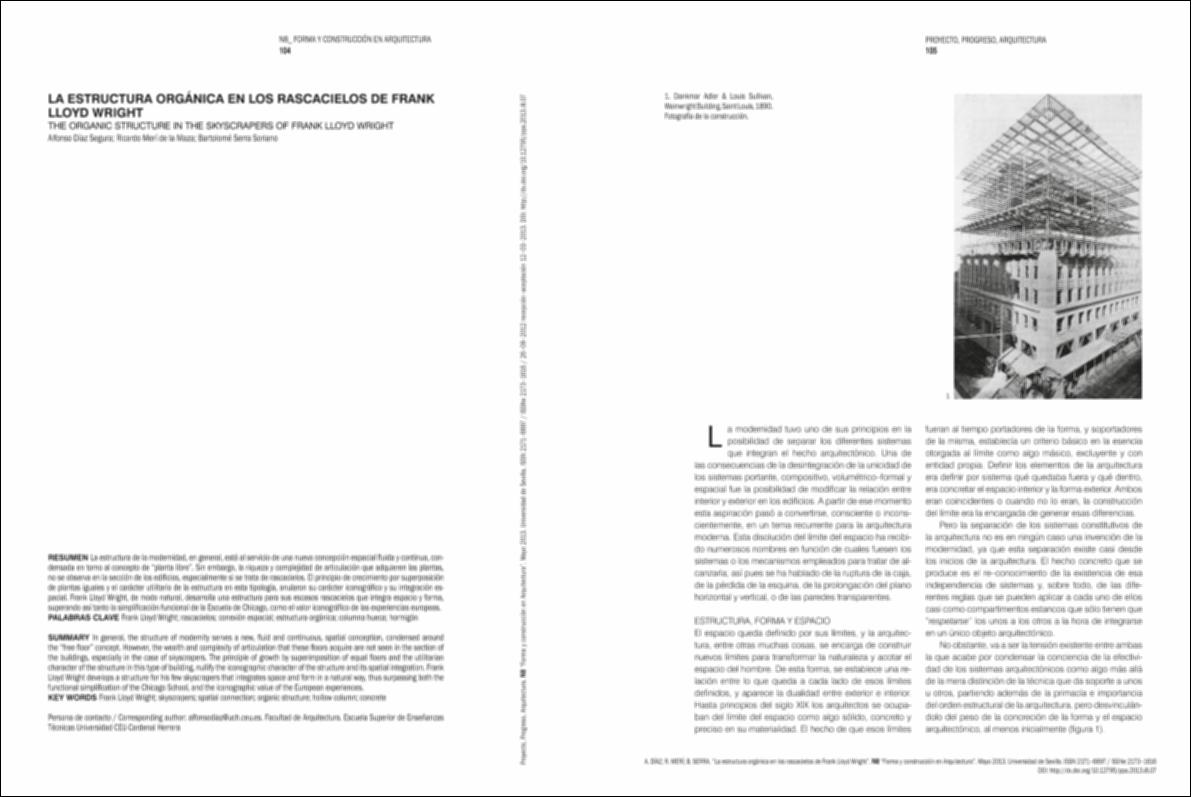Please use this identifier to cite or link to this item:
http://hdl.handle.net/10637/9091La estructura orgánica en los rascacielos de Frank Lloyd Wright
| Title: | La estructura orgánica en los rascacielos de Frank Lloyd Wright |
| Other Titles: | The organic structure in the skycrapers of Frank Lloyd Wright |
| Authors : | Díaz Segura, Alfonso Merí de la Maza, Ricardo Serra Soriano, Bartolomé |
| Keywords: | Wright, Frank Lloyd, 1867-1959.; Buildings - Design and construction.; Concrete construction.; Espacio (Arquitectura).; Space (Architecture).; Rascacielos - Diseño y construcción - Estados Unidos.; Edificios - Diseño y construcción.; Hormigón.; Concrete.; Construcciones de hormigón.; Estructuras.; Skyscrapers - Design and construction - United States. |
| Publisher: | Universidad de Sevilla. |
| Citation: | Díaz Segura, A., Merí de la Maza, R. y Serra Soriano, B. (2013). La estructura orgánica en los rascacielos de Frank Lloyd Wright. Proyecto, Progreso, Arquitectura, n. 8, pp. 104-117. DOI: http://dx.doi.org/10.12795/ppa.2013.i8.07 |
| Abstract: | La estructura de la modernidad, en general, está al servicio de una nueva concepción espacial fluida y continua, condensada en torno al concepto de “planta libre”. Sin embargo, la riqueza y complejidad de articulación que adquieren las plantas, no se observa en la sección de los edificios, especialmente si se trata de rascacielos. El principio de crecimiento por superposición de plantas iguales y el carácter utilitario de la estructura en esta tipología, anularon su carácter iconográfico y su integración espacial. Frank Lloyd Wright, de modo natural, desarrolla una estructura para sus escasos rascacielos que integra espacio y forma, superando así tanto la simplificación funcional de la Escuela de Chicago, como el valor iconográfico de las experiencias europeas. / In general, the structure of modernity serves a new, fluid and continuous, spatial conception, condensed around the “free floor” concept. However, the wealth and complexity of articulation that these floors acquire are not seen in the section of the buildings, especially in the case of skyscrapers. The principle of growth by superimposition of equal floors and the utilitarian character of the structure in this type of building, nullify the iconographic character of the structure and its spatial integration. Frank Lloyd Wright develops a structure for his few skyscrapers that integrates space and form in a natural way, thus surpassing both the functional simplification of the Chicago School, and the iconographic value of the European experiences. |
| URI: | http://hdl.handle.net/10637/9091 |
| Rights : | http://creativecommons.org/licenses/by-nc-nd/4.0/deed.es |
| ISSN: | 2171-6897 2173-1616 (Electrónico) |
| Issue Date: | 1-May-2013 |
| Center : | Universidad Cardenal Herrera-CEU |
| Appears in Collections: | Dpto. Proyectos, Teoría y Técnica del Diseño y la Arquitectura |
Items in DSpace are protected by copyright, with all rights reserved, unless otherwise indicated.


